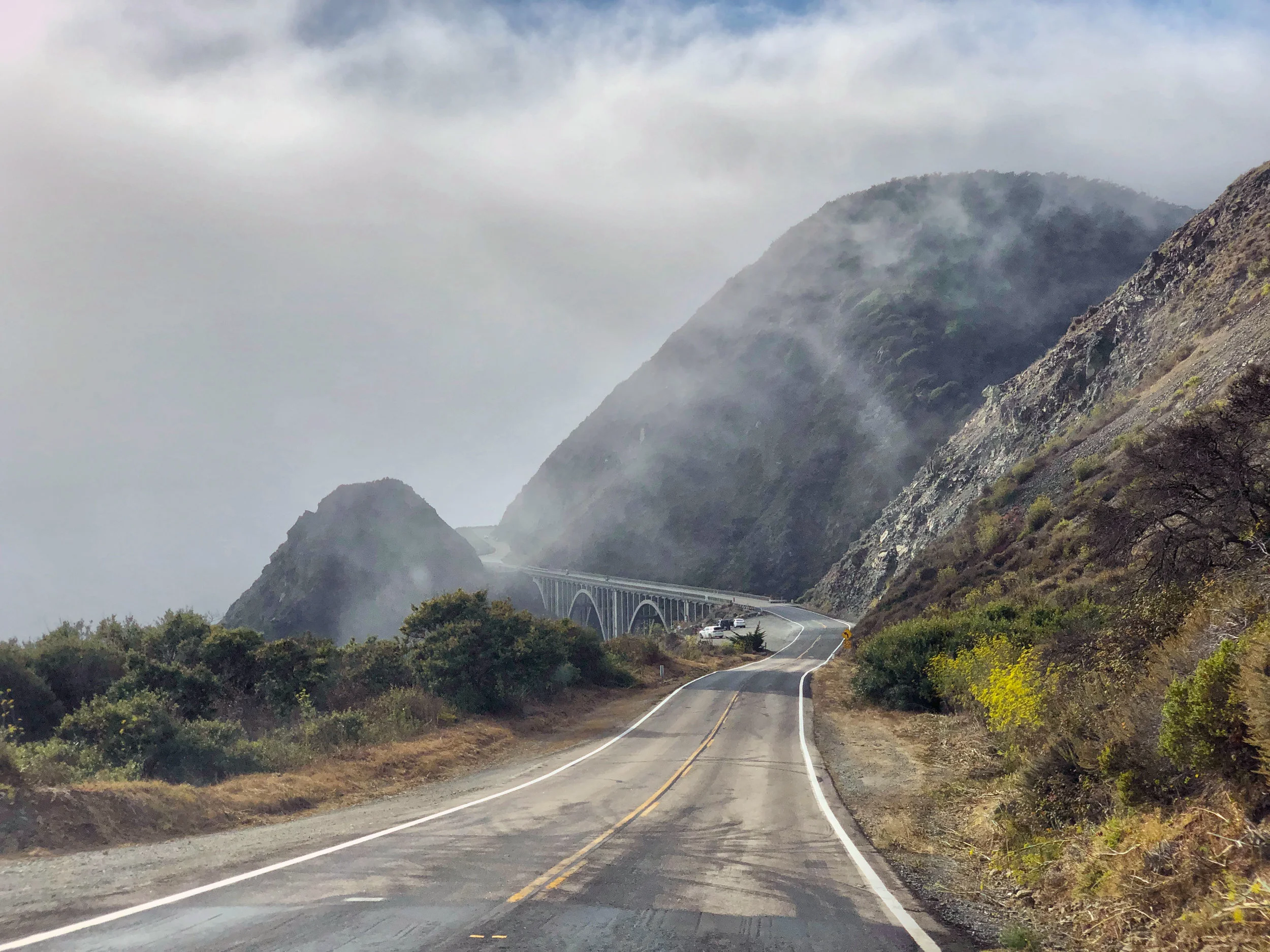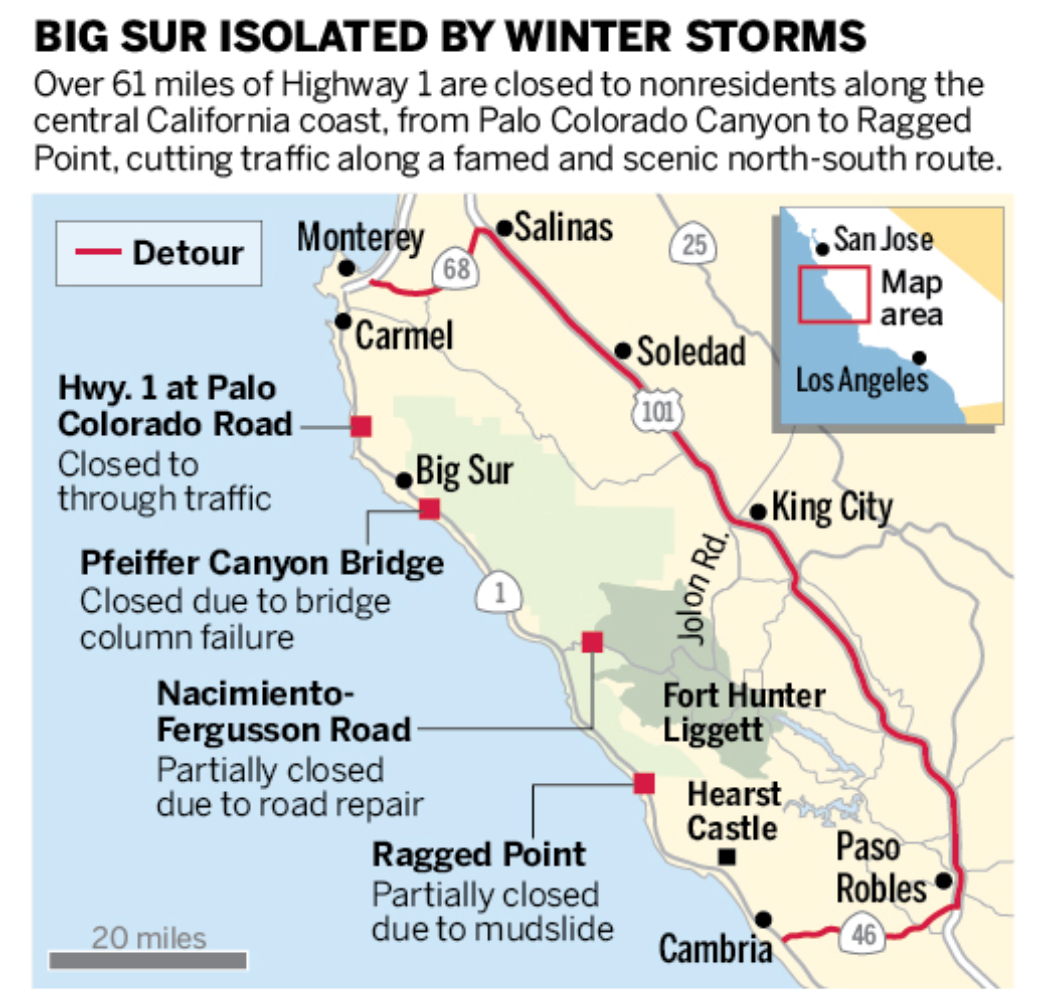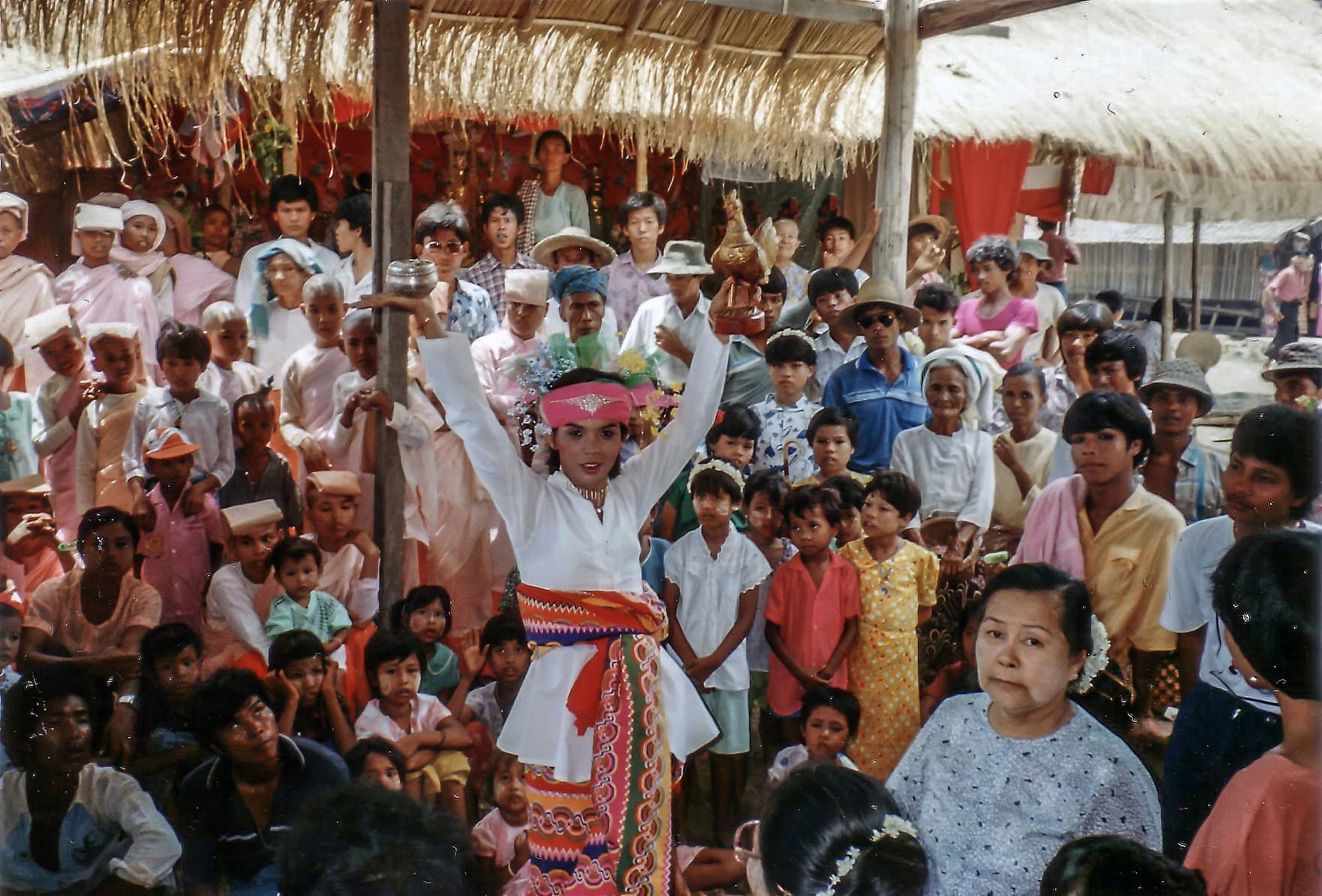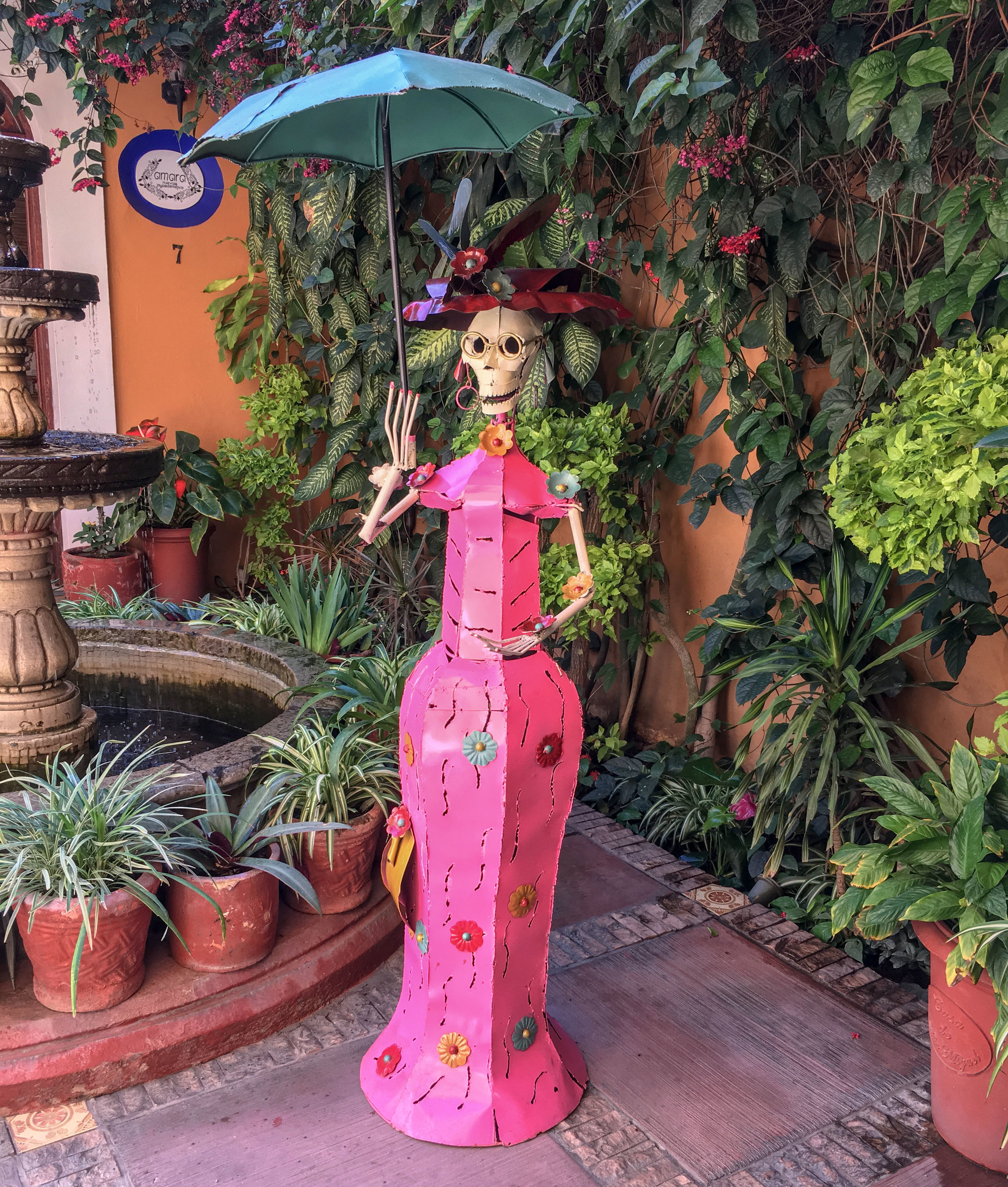Coastal fog can frustrate visitors to Big Sur, shrouding vistas in veils of white cotton scrim. The fog usually burns off in the afternoon, but it can play a game of cat-and-mouse moving in and out from the sea to the headlands and back out again. Bixby Bridge is the view sine qua non that every tourist must capture as proof of a visit to Big Sur.
The road pull-outs on either side of the north end of Bixby canyon are glutted with rental cars emptying out people clutching BIG SUR GUIDEBOOKS in French, German and Urdu.
The dedication ceremony to open Highway 1 through Big Sur was held on July 3, 1937 at the Bixby Creek Bridge.
Convict labor was used to finish the road and bridges when funds ran out to complete the coastal route through Big Sur.
Despite the graceful beauty of the Bixby Bridge, ugly road cuts in the surrounding mountain slope are plainly visible from vantage points just off the highway. If there is no such thing as a “free lunch” in creating a durable pathway through majestic mountains, breathtaking coastal beaches and views of the Pacific Ocean for miles to the horizon, this image may speak to it.
Big elbows of Rock rising everywhere, sea caves within them, seas plollocking all around inside them crashing out foams, the boom and pound on the sand, the sand dipping quick (no Malibu Beach here) —-Yet you turn and see the pleasant woods winding upcreek like a picture in Vermont——But you look up into the sky, bend way back, my God you’re standing directly under that aerial bridge with its thin white line running from rock to rock and witless cars racing across it like dreams! From rock to rock! All the way down the raging coast! So that when later I heard people say “Oh Big Sur must be beautiful!” I gulp to wonder why it has the reputation of being beautiful above and beyond its fearfulness, its Blakean groaning roughrock Creation throes, those vistas when you drive the coast highway on a sunny day opening up the eye for miles of horrible washing sawing.
Big Sur by Jack Kerouac




























































